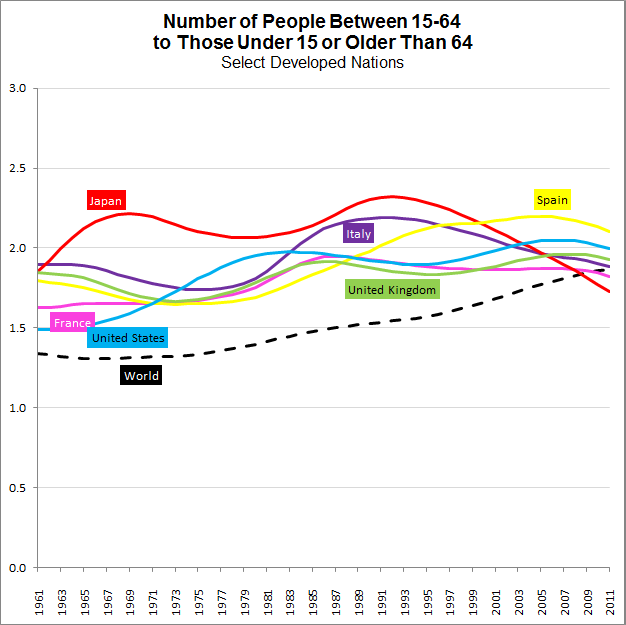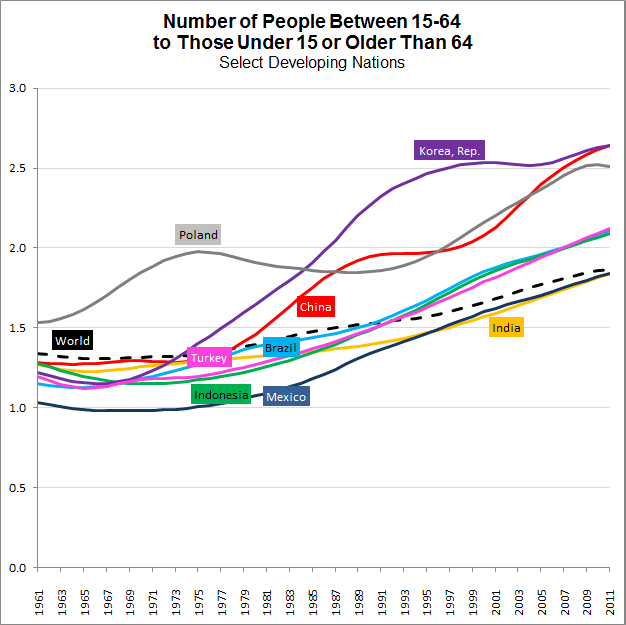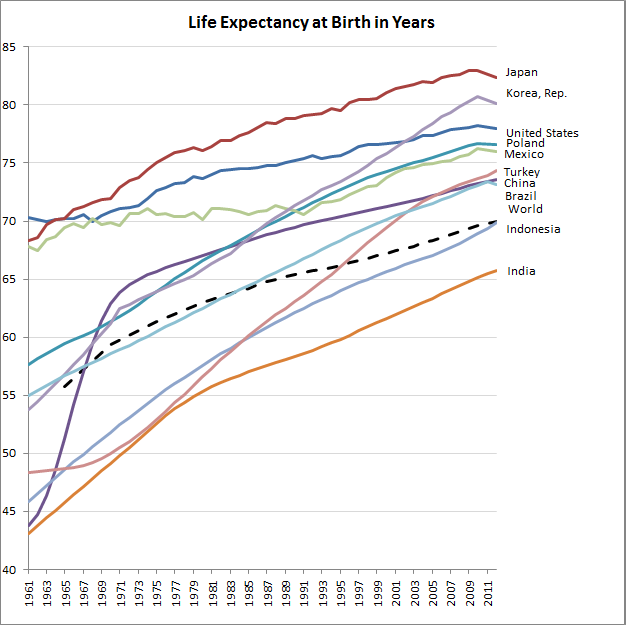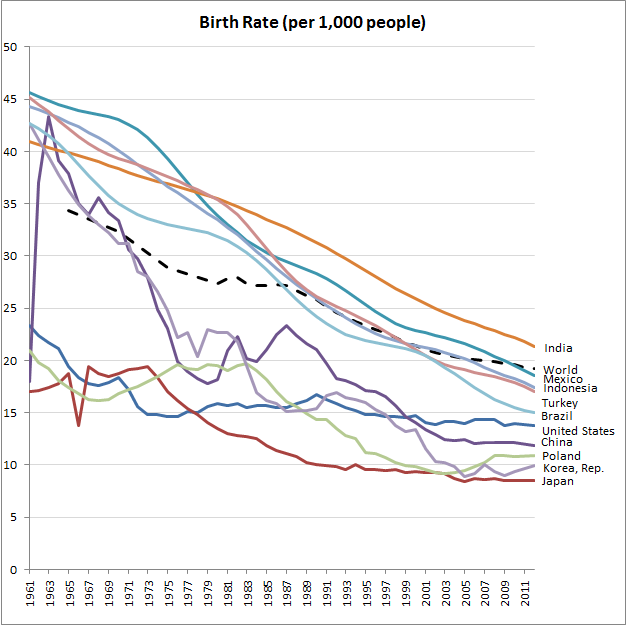In many economically advanced nations the ratio of working age individuals (defined as 15-64 years of age) to those not of working age (defined as under 15 or over 64 years of age) has been decreasing for nearly a decade. Three trends are primarily responsible for this phenomenon. First, in the two decades following World War II, Western Europe, the United States and Japan all had a sharp increase in the number of children. This period is popularly referred to as the “baby boom”. Second, life expediencies increased significantly over the past half century. Third, there are less children born today relative to the post war years.
Japan, perhaps, provides the starkest example of a decline in the working age population to the non-working age population. In the early 1990s there were there were about 2.3 working age people (15-64 years old) for every 1.0 non-working age people (under 15 or over 64 years old). Today there are only 1.7 people aged 15-64 years for every 1.0 person that is under 15 or over 64. This is well below the world average of 1.9.
The decrease in the ratio of working age to non-working age people is important for two reason. First, people of working age are responsible for the majority of demand (expenditures) in an economy. Second, in many developed nations there are social programs to support those past the traditional working age. These programs are primarily funded by younger generations. In the United States, Social Security and Medicare are examples of this type of program.
In many economically developing nations, the historical trend of this ratio has been the complete opposite. Great examples include South Korea, Poland and China. Each nations has had a ratio of greater than 2.0 since the mid 1990s. All of the nations charted below have had a generally upward sloping trend in the working to non-working age population ratio.
Life expectancy in all of the aforementioned economically developed and developing countries have been on the rise, while birth rates have continued to decline. While the many of the developed nations are already undergoing a decline in the working age to non-working age ratio, some of the developing nations highlighted may also experience a similar decline in the coming decades if life expectancy continues to increase and birth rates do not pick up.
Data Source: The World Bank



